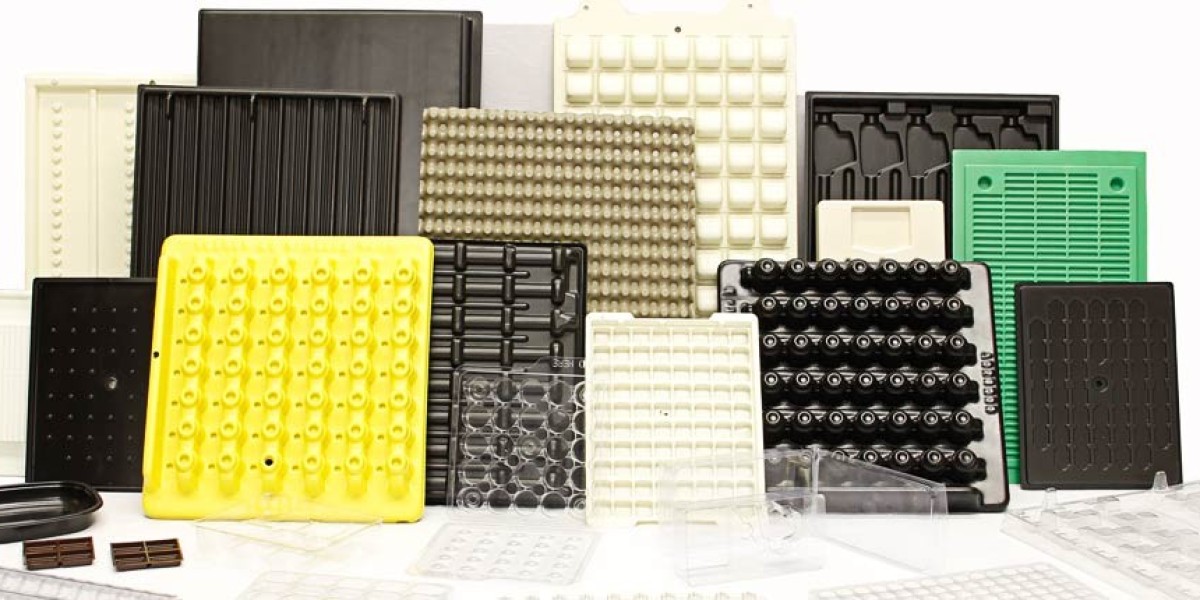Introduction
Thermoforming is a manufacturing process where a plastic sheet is heated to a pliable forming temperature, formed to a specific shape in a mold or over a form, and trimmed to create a usable product. The two main types of thermoforming are vacuum forming and pressure forming.
Vacuum Forming Process
In vacuum forming, the sheet of plastic is first heated to softening point, either by conduction, convection, or infrared heating. The heated plastic becomes pliable and malleable. It is then placed over a shaped cavity or mold and air is extracted using a vacuum pump. Atmospheric pressure presses the softened plastic against the mold contours to take its shape. After forming, the piece is trimmed and finished.
Common plastics used in vacuum forming include acrylic (polymethyl methacrylate or PMMA), polycarbonate (PC), polyethylene terephthalate glycol-modified (PETG), and polystyrene (PS). These thermoform well and maintain their strength and rigidity after forming. End uses include food and medical packaging, containers, displays, equipment guards and covers, architectural cladding, and vehicle components.
Pressure Forming Process
In pressure forming, the plastic sheet is stretched into or onto the mold by the application of pressure rather than vacuum. The plastic is clamped at the edges while pressure is applied through the centers. Multiple molds can be used to intricately shape complex parts through pressure forming. This process is suitable for thicker and higher temperature resistant materials like acrylonitrile butadiene styrene (ABS) and polypropylene (PP).
Benefits of Thermoforming
Thermoforming provides several advantages over other plastic fabrication techniques:
- Versatility: Many plastic materials can be thermoformed into complex 3D shapes that would be difficult or impossible through other molding processes.
- Low Cost: Thermoforming needs less expensive molds compared to injection molding. Lower capital costs makes it suitable for low to mid-volume production runs.
- Fast Production: Set up times are short and parts can be produced quickly once the tooling is prepared. Batches of hundreds or thousands of parts can be produced per hour.
- Minimal Waste: Only the plastic flashing around the formed part is trimmed as waste. There is negligible material waste compared to other processes.
- Mass Customization: Designs can be easily modified by changing molds/cavities. This allows producing custom or variable designs efficiently.
Common Applications of Thermoformed Plastics
Medical Packaging
Thermoformed plastics like PETG and PS are prominently used to produce clamshell packages, blister packs, and other packaging for medical devices, pharmaceuticals, and healthcare products. Their stiffness, clarity, and moisture and gas barrier properties make them suitable for sterilizable medical packaging.
Food Packaging
Several thermoformed foods like breakfast cereals, snacks, baked goods are packed using PET, PP, and PS trays, clamshells, and other containers for optimal protection, presentation and shelf life. Features like reclosability, sealability, and microwaveability are optimally delivered by thermoformed packages.
Protective Packaging
Materials like HDPE, LDPE, EVA are thermoformed into void-fill pillows, corner protectors, wrap films, mailers and other forms to provide cushioning and insulation during transportation or storage of delicate items. Their formability and impact absorption properties make them ideal protective packaging solutions.
Consumer Goods Packaging
From electronics and small appliances to toys and other consumer goods - thermoformed PS, PVC, and ABS trays, boxes and blister packs efficiently package and display products on retail shelves. Features like tamper evidence and graphics registration benefit consumer products packaging.
Automotive Components
ABS and PC are thermoformed into instrument panel covers, air vent grilles, bumper fascia, door panels and other interior and exterior automotive trim components. Their formability and mechanical properties meet automotive industry requirements for safety, design, and performance.
Future Developments
Advancements in material science, manufacturing technology, and design engineering are constantly enhancing thermoforming capabilities. Developments like precise trimming, inline printing/decoration, material recycling, automation, and integration with other technologies will further expand thermoforming applications. With sustainability and customization gaining focus, thermoforming poised to become even more integral to high-volume manufacturing across industries.
In conclusion, thermoforming leverages the unique formability of plastics through heat and pressure/vacuum to precisely produce intricate 3D parts rapidly and cost-effectively. The versatility and commercial viability of thermoformed plastics have led to their widespread use across medical, food, consumer, automotive and other vital industry sectors. Continued innovation promises to open newer application areas for this established shaping technique.



